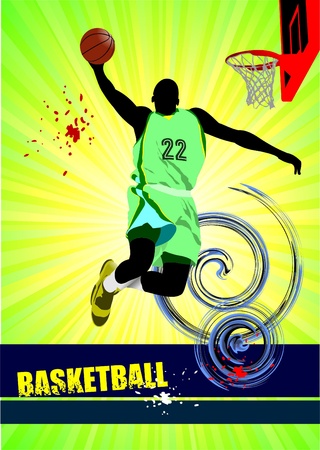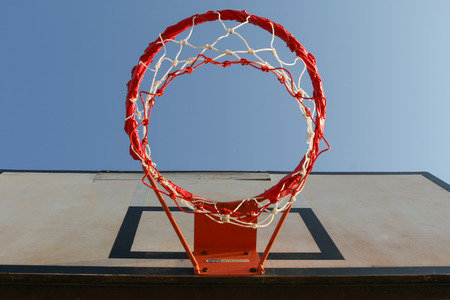1. Understanding Sport-Specific Demands
When it comes to sport-specific rehabilitation, understanding the unique physical and biomechanical demands of each sport is crucial. Basketball, football, and baseball all require different movement patterns, skills, and place athletes at risk for certain types of injuries. Let’s break down what makes each sport unique and how these factors influence rehab approaches.
Basketball: Speed, Agility, and Vertical Movements
Basketball players are constantly sprinting, jumping, and making quick directional changes. These actions put a lot of stress on the knees, ankles, and feet. Common movement patterns include rapid acceleration and deceleration, lateral shuffling, and explosive jumping. Because of this, basketball players are prone to ankle sprains, ACL tears, and patellar tendinitis.
Key Risks in Basketball
| Movement Pattern | Main Body Area Involved | Common Injuries |
|---|---|---|
| Jumping & Landing | Knees/Ankles | ACL Tears, Ankle Sprains |
| Lateral Cuts | Knees/Hips | MCL Injuries, Meniscus Tears |
| Sprinting & Sudden Stops | Lower Leg/Feet | Shin Splints, Stress Fractures |
Football: Power, Contact, and Multi-Directional Movement
Football is a high-contact sport that combines strength, speed, and agility. Players often engage in tackling, blocking, and rapid changes in direction. The game places significant demands on the shoulders, knees, and head. Common injuries include concussions, shoulder dislocations, hamstring strains, and knee ligament injuries.
Key Risks in Football
| Movement Pattern | Main Body Area Involved | Common Injuries |
|---|---|---|
| Tackling/Blocking | Shoulders/Neck/Head | Concussions, Shoulder Dislocations |
| Sprinting & Cutting | Knees/Hamstrings | ACL Tears, Hamstring Strains |
| Pushing Off/Explosive Starts | Legs/Core | Ankle Sprains, Groin Pulls |
Baseball: Repetitive Overhead Motions and Rotational Power
Baseball might seem less intense than football or basketball but involves repetitive overhead throwing motions (for pitchers) and powerful rotational movements (for batters). This puts stress on the shoulders, elbows, and lower back. Overuse injuries like rotator cuff tears and elbow ligament injuries are common.
Key Risks in Baseball
| Movement Pattern | Main Body Area Involved | Common Injuries |
|---|---|---|
| Throwing/Pitching | Shoulders/Elbows | Rotator Cuff Tears, UCL Injuries (Tommy John) |
| Swinging Bat (Rotation) | Core/Lower Back | Oblique Strains, Lower Back Pain |
| Baserunning/Sliding | Knees/Ankles/Hands | Ankle Sprains, Finger Dislocations |
The Importance of Customization in Rehab Plans
No two sports—and no two athletes—are exactly alike. That’s why it’s so important to customize rehabilitation plans based on the specific demands of basketball, football, or baseball. By focusing on the unique movement patterns and injury risks associated with each sport, physical therapists can help athletes recover safely and return to peak performance.
2. Assessment and Diagnosis: Tailoring for Each Athlete
Understanding the Importance of Individualized Evaluation
Every athlete is unique, especially when comparing basketball, football, and baseball players. Their bodies move differently, face different injury risks, and have sport-specific demands. That’s why a thorough assessment is crucial before starting any rehab program. By identifying each player’s functional deficits, understanding how injuries happened, and recognizing the unique needs of their sport, we can build a solid foundation for effective recovery.
Comprehensive Evaluation Strategies
A successful assessment includes several key steps:
- Medical History Review: Knowing prior injuries, surgeries, and current symptoms helps shape the evaluation process.
- Functional Testing: Observing movement patterns, strength, balance, and flexibility relevant to each sport.
- Sport-Specific Analysis: Understanding the physical requirements and common injury mechanisms in basketball, football, and baseball.
- Communication: Talking with athletes about their goals, pain points, and performance expectations.
Common Injury Mechanisms & Functional Deficits by Sport
| Sport | Frequent Injuries | Key Functional Deficits | Main Assessment Focus |
|---|---|---|---|
| Basketball | Ankle sprains Knee injuries (ACL/Meniscus) Shoulder strains |
Lateral movement Jumping/landing mechanics Dynamic balance |
Ankle stability Knee alignment Plyometric control |
| Football | Knee ligament tears Hamstring strains Shoulder dislocations |
Explosive sprinting Tackling form Total body coordination |
Eccentric hamstring strength Core stability Contact readiness |
| Baseball | Rotator cuff injuries Elbow (UCL) sprains Oblique strains |
Throwing mechanics Torso rotation Shoulder mobility |
Shoulder range of motion Serratus strength Pitching/hitting form |
The Value of Sport-Specific Testing Tools
Certain tools can help therapists get precise data on an athletes strengths and weaknesses. For example:
- Basketball: Single-leg hop tests to check landing stability.
- Football: Agility drills like the shuttle run for speed and change-of-direction ability.
- Baseball: Goniometry for shoulder range of motion; video analysis of pitching or batting technique.
The Takeaway: One Size Doesn’t Fit All
No two athletes are exactly alike—even if they play the same sport. That’s why a detailed assessment and diagnosis tailored to each individual is essential in sport-specific rehabilitation. This approach ensures that every aspect of an athlete’s recovery plan matches their needs and helps them safely return to peak performance.

3. Customized Treatment Plans
Creating effective sport-specific rehabilitation programs means understanding that each athlete and each sport has unique demands. Here’s how physical therapists design individualized plans for basketball, football, and baseball players, focusing on targeted exercise selection, manual therapy techniques, and sport-relevant modalities.
Exercise Selection: Matching Movements to Sport
Choosing the right exercises is crucial. Each sport stresses different body parts and movement patterns, so rehab must mirror these actions. Below is a breakdown:
| Sport | Main Focus Areas | Key Exercises |
|---|---|---|
| Basketball | Knees, ankles, agility, jumping | Single-leg hops, agility ladder drills, box jumps, lateral shuffles |
| Football | Shoulders, knees, explosive power | Squats, resisted sprints, plyometric push-ups, sled pushes |
| Baseball | Shoulders, elbows, core rotation | Medicine ball throws, banded rotator cuff work, trunk rotations, scapular stabilization drills |
Manual Therapy: Hands-On Techniques for Faster Recovery
Manual therapy helps reduce pain and restore mobility. Depending on the injury and sport:
- Basketball: Joint mobilizations for ankles and knees; soft tissue massage for calves and quads.
- Football: Deep tissue release for hamstrings and shoulders; myofascial release for lower back tension.
- Baseball: Soft tissue mobilization for the shoulder girdle; gentle stretching of the forearm and wrist.
Sport-Relevant Modalities: Using Technology to Speed Up Healing
Certain modalities are especially helpful in addressing common injuries seen in each sport. These may include:
| Sport | Common Modalities Used | Main Benefits |
|---|---|---|
| Basketball | Cryotherapy (ice), electrical stimulation (e-stim) | Reduces swelling after ankle/knee injuries; decreases muscle spasms post-game. |
| Football | Kinesio taping, ultrasound therapy | Adds joint stability during return to play; speeds up healing of soft tissue bruises. |
| Baseball | Therapeutic ultrasound, heat packs before throwing sessions | Lowers inflammation in the elbow/shoulder; increases blood flow pre-throwing. |
The Individualized Approach Matters Most
No two athletes or injuries are exactly alike—even within the same sport. Physical therapists always assess each player’s needs, position-specific stresses (like a pitcher versus an outfielder), and recovery goals to create a plan that helps them safely return to their best game shape.
4. Progression and Return-to-Play Criteria
Getting athletes back on the field or court safely is a top priority in sport-specific rehabilitation. Physical therapists use evidence-based progression models to make sure that basketball, football, and baseball players are truly ready before returning to play. This involves following clear steps and meeting certain benchmarks at each stage of recovery.
Phases of Progression in Sport-Specific Rehab
| Phase | Goals | Key Activities |
|---|---|---|
| Acute Phase | Reduce pain and swelling; protect injury | Rest, ice, gentle movement, bracing if needed |
| Subacute Phase | Restore range of motion; begin strengthening | Stretching, light resistance exercises, balance drills |
| Advanced Strengthening | Build power and endurance; prepare for sport skills | Plyometrics, agility drills, progressive weight training |
| Sport-Specific Training | Reintroduce sport movements; assess readiness | Shooting (basketball), cutting (football), throwing (baseball) |
| Return-to-Play | Full participation with no restrictions | Practice scrimmages, monitored game situations |
Performance Benchmarks for Return-to-Play
Athletes must meet certain physical and functional criteria before they’re cleared for competition. These benchmarks help reduce re-injury risk and ensure peak performance. Here’s what therapists often look for:
- No pain or swelling during activity: The athlete can perform all movements without discomfort.
- Normal strength and flexibility: Injured side matches the healthy side within 90-95%.
- Sport-specific testing:
| Sport | Test Example |
|---|---|
| Basketball | Single-leg hop test, vertical jump, shuttle run drills |
| Football | Lateral agility tests, sprint speed, tackle simulations |
| Baseball | Pitch velocity tracking, rotator cuff endurance tests, batting practice swings |
- Psychological readiness: Athlete feels confident and mentally prepared to compete.
The Role of Communication in Safe Progression
Coaches, athletic trainers, physicians, and PTs work as a team throughout rehab. Regular check-ins make sure everyone is on the same page about an athlete’s progress. Open communication helps spot any issues early and adjust the plan when needed.
5. Integrating Multidisciplinary Support
When it comes to sport-specific rehabilitation for basketball, football, and baseball players, a team approach makes all the difference. Athletes don’t just work with physical therapists—they rely on a whole support crew to get back in the game safely and stay at their best. Let’s break down how each specialist helps optimize rehab outcomes and keeps athletes ready for action.
Athletic Trainers: The First Line of Defense
Athletic trainers are often the first to spot injuries on the field or court. They provide immediate care, help with injury assessment, and communicate closely with physical therapists to make sure rehab plans match the athlete’s needs and sport demands. Their hands-on knowledge of the athlete’s day-to-day condition is key for early intervention and ongoing progress checks.
Coaches: Bridging Rehab and Sport Performance
Coaches play an important role in making sure rehab aligns with team strategies and game schedules. They work with therapists to modify practice drills, manage training loads, and gradually reintroduce injured players back into team activities. Coaches also motivate athletes to stick to their rehab routines and help set realistic expectations.
Strength and Conditioning Staff: Building Back Better
Strength and conditioning coaches design custom workout programs that focus on regaining lost strength, agility, and endurance. For sport-specific rehab, they target muscle groups most used in basketball (like explosive legs), football (powerful upper body), or baseball (rotational core strength). They ensure exercises progress appropriately from basic movements to more intense, sport-like drills.
Nutritionists: Fueling Recovery and Performance
Proper nutrition speeds up healing and supports overall performance. Nutritionists advise athletes on what to eat during recovery—more protein for muscle repair, the right carbs for energy, plus vitamins and minerals that reduce inflammation. They adjust meal plans based on each player’s needs, ensuring they return stronger than before.
How Each Specialist Supports Rehab
| Role | Main Responsibilities | Sport-Specific Focus |
|---|---|---|
| Athletic Trainer | Injury evaluation, immediate care, progress tracking | On-field/court assessments; sport-specific injury patterns |
| Coach | Practice adjustments, motivation, return-to-play guidance | Integrates rehab with team tactics; manages training loads |
| Strength & Conditioning Staff | Customized workouts, progression monitoring | Targets critical muscles/movements for each sport |
| Nutritionist | Meal planning, supplement advice, recovery nutrition | Tailors diets for injury healing & peak performance needs |
Teamwork Makes the Dream Work
No single expert can do it all—especially in high-stakes sports like basketball, football, or baseball. By combining everyone’s expertise, rehab plans become more effective and personalized. This team-based model not only gets athletes back in action faster but also lowers the risk of re-injury so they can perform at their highest level.


